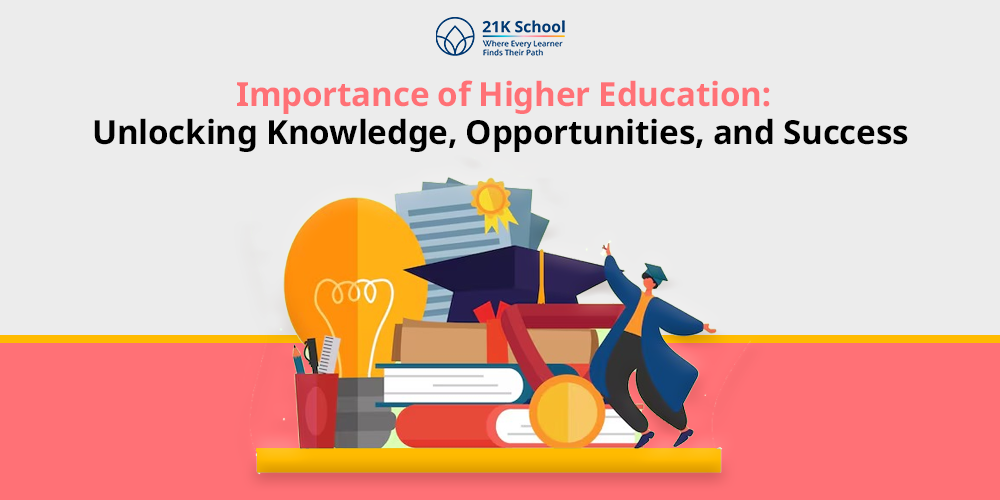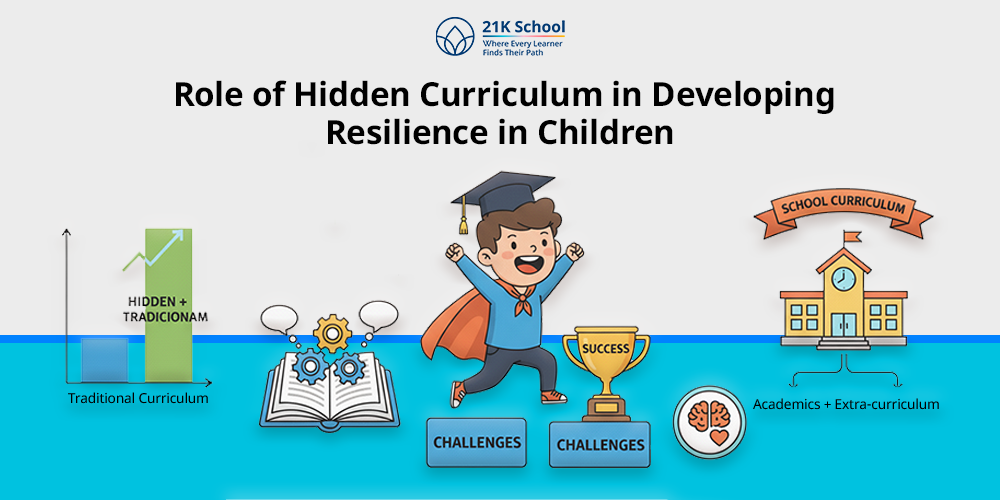
Reading is something that we all do on a daily basis, whether it is through social media, recipes or good books. However, have you ever considered what exactly the process of reading consists of?
It is not all a matter of reading words on a page. Reading is a complex skill that consists of a number of various skills. They collaborate to ensure that we comprehend and make sense of what we read.
Here are some reading tips to help students build better reading skills.
Your role as a student trying to improve your grades can be fostered with these reading skills. A parent trying to help a child improve his grades or a person trying to increase reading can greatly benefit.
Here in this article, we will deconstruct the major types of reading skills, and the various reading styles. It also provides you with some smart advice to assist you in becoming a more competent, faster reader.
Alright, Let us go!
Table of Contents
8 Types of Reading Skills Enabling Reading at All Levels
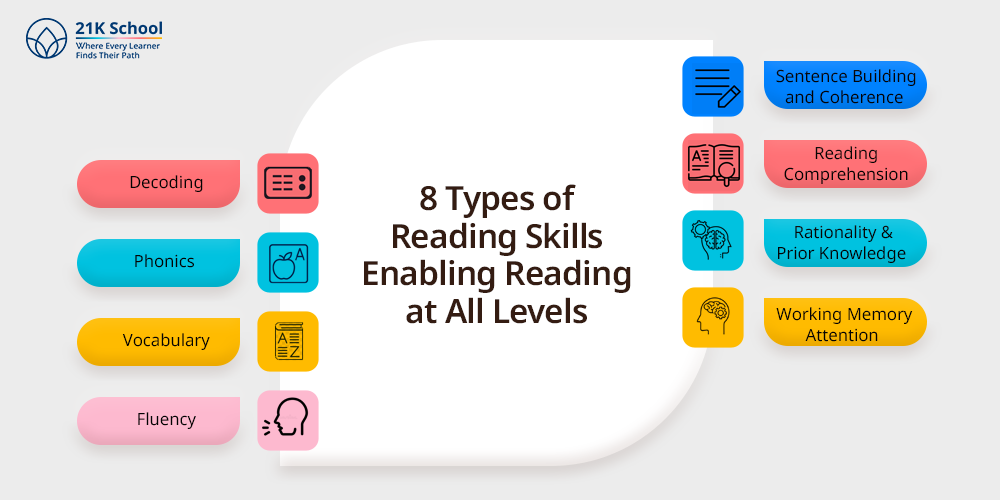
Reading is an interaction of a bunch of different skills that interact to make us comprehend, read, and interpret whatever is written. The 8 top-level reading skills are decoding, phonics, vocabulary, fluency, sentence construction, comprehension, reasoning, and attention.
All these together are the skills that enable reading at all levels and topics.
1. Decoding
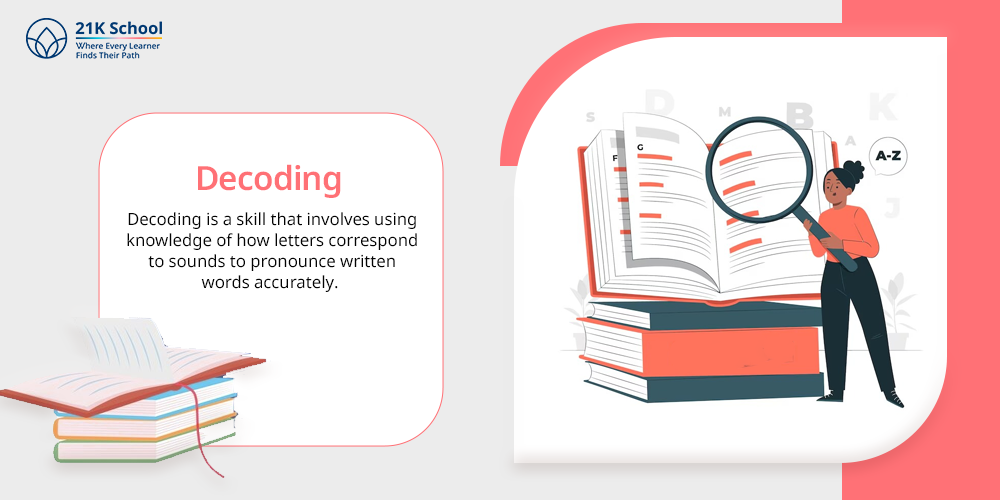
Decoding is a skill that involves using knowledge of how letters correspond to sounds to pronounce written words accurately. This is the prerequisite skill to start to read.
And it is a skill of recognizing letters and their related sounds, and blending them to read the words. To give an example, when a child can decode the word cat, this child can combine the sounds of C-A-T.
2. Phonics
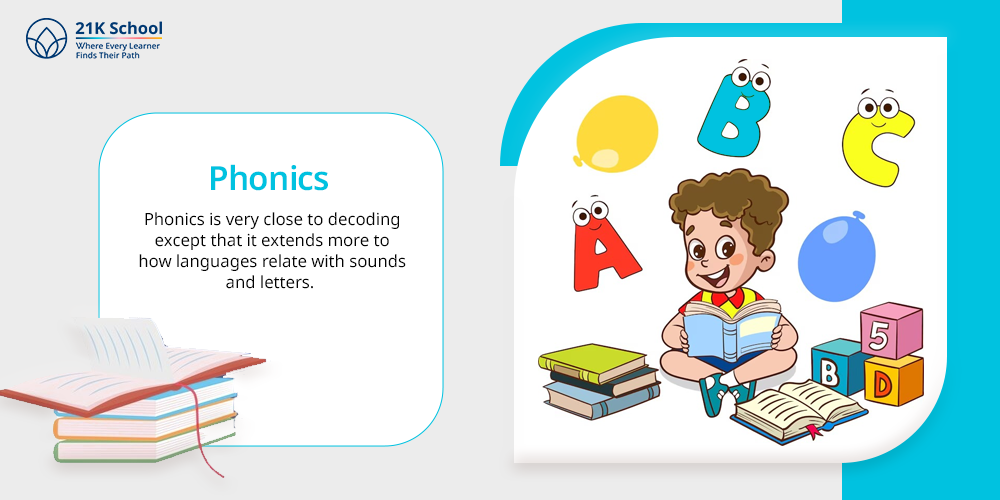
Phonics is very close to decoding except that it extends more to how languages relate with sounds and letters. It teaches readers to identify the pattern of sounds, attempting at blends and digraphs so they can read unknown words.
A command of phonics enables learners to read hard and multisyllabic words to enhance fluency and confidence in reading.
3. Vocabulary
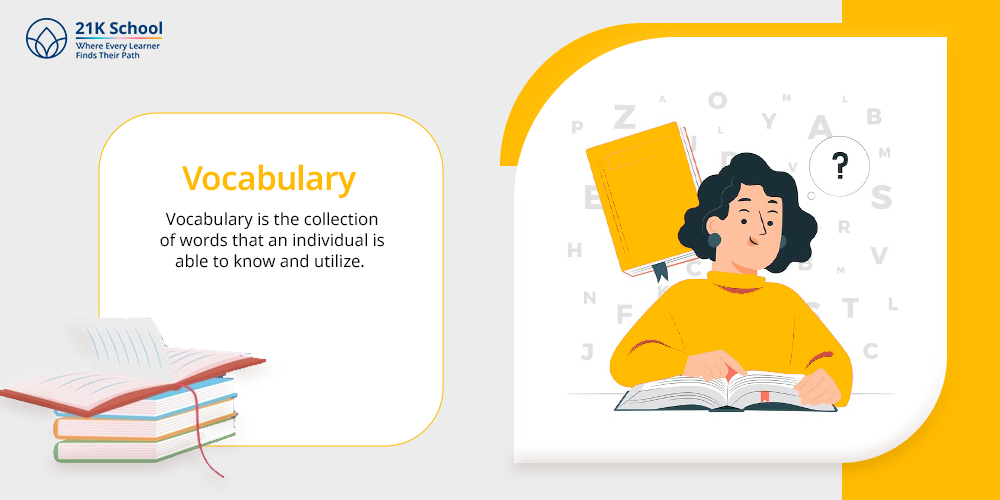
Good vocabulary is important to get a comprehension of what is read. Vocabulary is the collection of words that an individual is able to know and utilize.
The extent to which vocabulary is wide makes reading easy. Context clues and roots of words are often used by the reader to determine the meaning of the unknown word.
Good vocabulary enhances oral and written communication. To improve vocabulary at home you should know how to develop a reading habit in your child.
4. Fluency
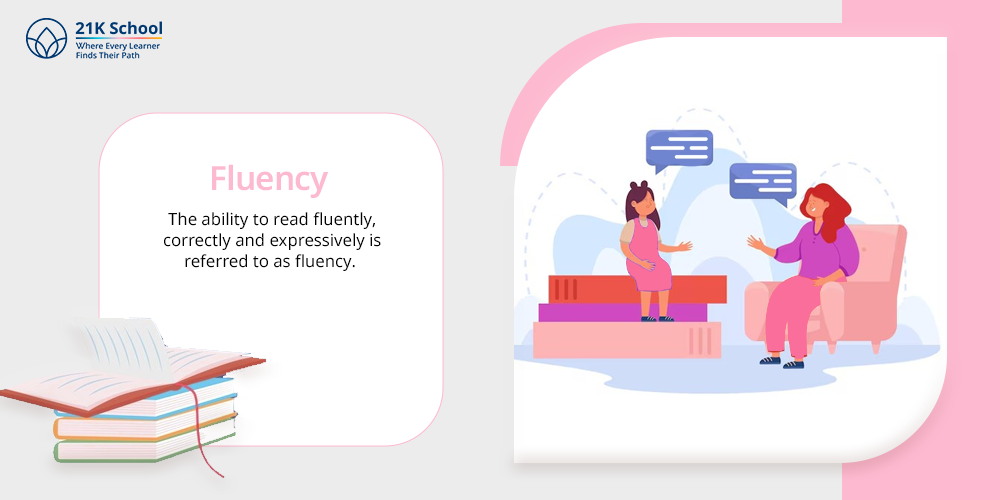
The ability to read fluently, correctly and expressively is referred to as fluency. Good readers simply skip the decoding process before focusing on the text meaning.
Fluency is like a frontier between recognizing the words and understanding them. It can be acquired frequently during continuous reading and the exposure to diverse texts.
5. Sentence Building and Coherence
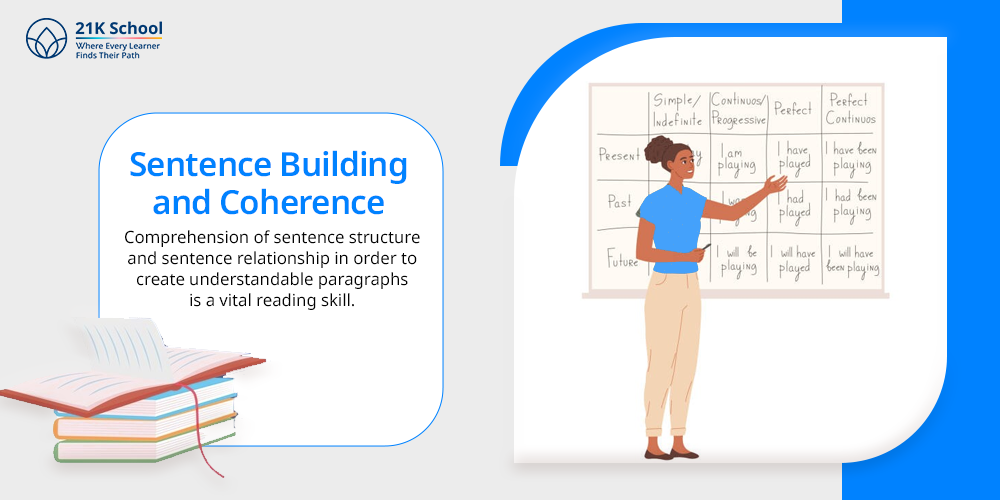
Comprehension of sentence structure and sentence relationship in order to create understandable paragraphs is a vital reading skill. This involves identification of transitions, agreement between subject and verb, as well as logical progression.
Cohesion enables a reader to trace the ideas through a text and the interrelationships between these sections.
6. Reading Comprehension
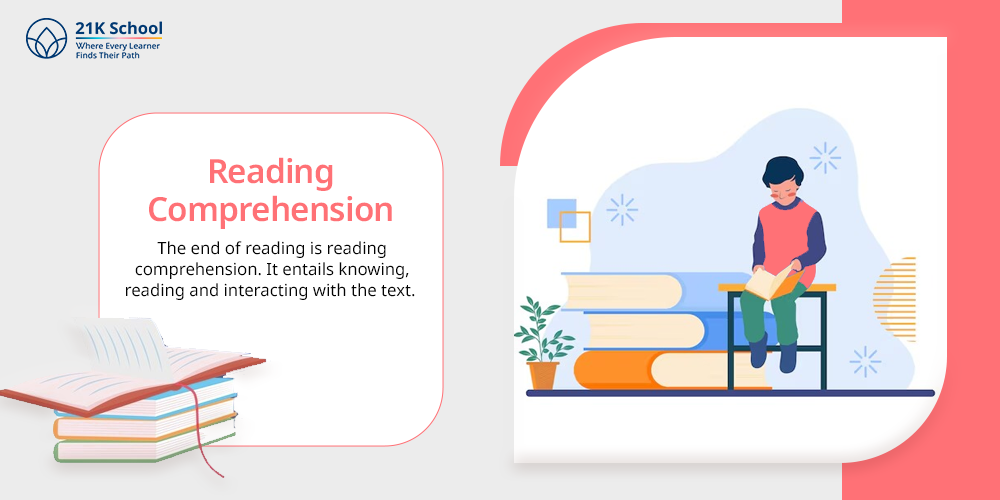
The end of reading is reading comprehension. It entails knowing, reading and interacting with the text.
Understanding entails the incorporation of all other reading skills to put meaning into a text. The ability to understand is a strong possession that facilitates noting meaning, reasoning, and responding to texts.
7. Rationality & Prior Knowledge
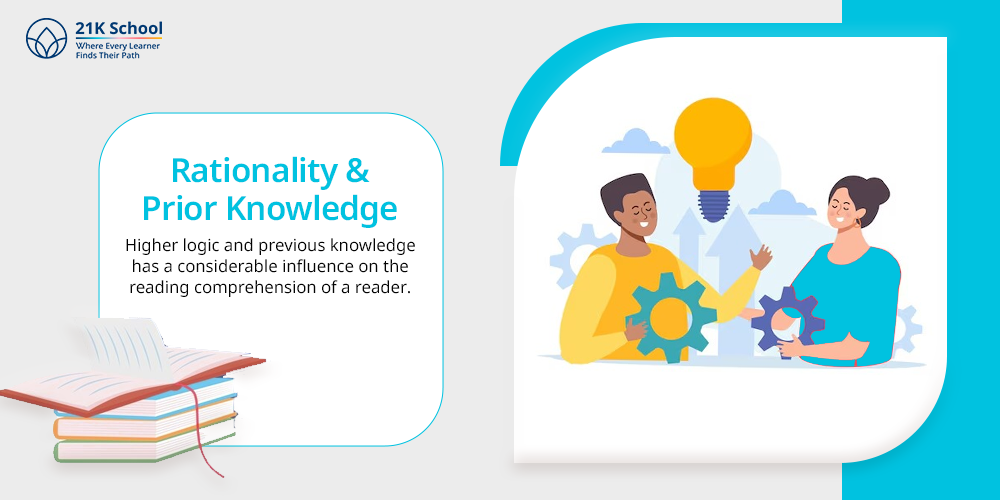
Higher logic and previous knowledge has a considerable influence on the reading comprehension of a reader. Knowledge background enables the readers to relate what they read with what they have known before.
Thus, fostering one of the most crucial benefits of reading for students. They can reason logically and can conclude, identify inconsistencies, and critically judge contents.
8. Working Memory Attention

Getting to read needs continuing attention and working memory. Although attention helps the reader to remain focused during reading, working memory helps the reader to store and manipulate information.
Ineffectiveness in either of the two may lead to inability to understand longer or more complex texts. It is one of the most important benefits of reading books.
5 Types of Reading
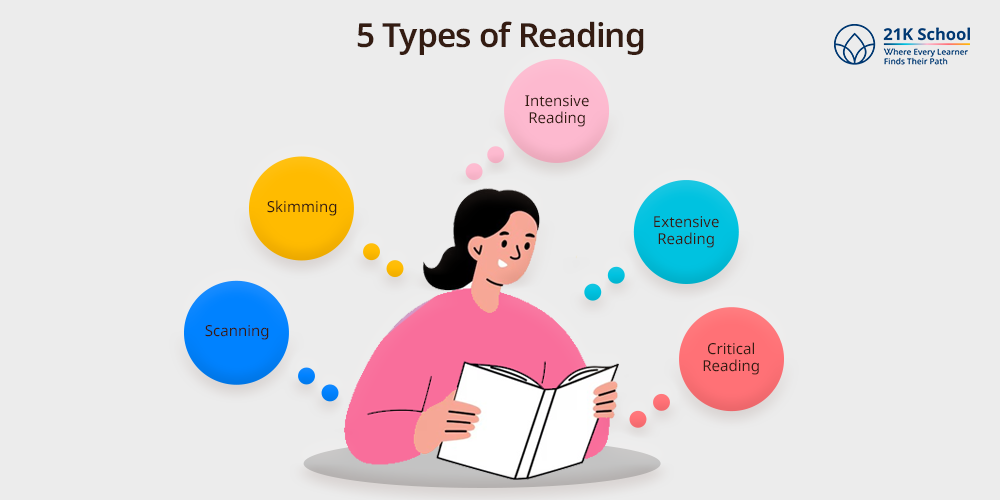
There is variance in strategies required in various reading activities. These are five types of common reading:
1. Scanning
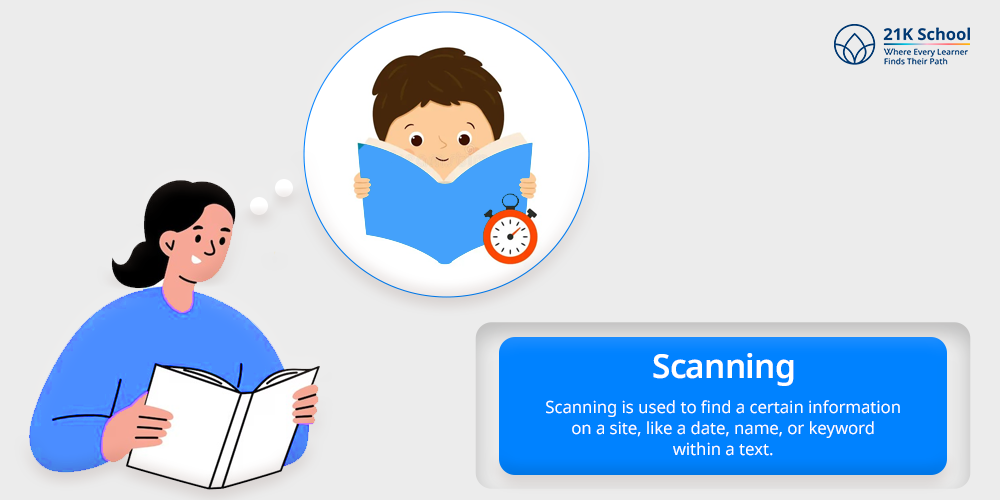
Scanning is used to find a certain information on a site, like a date, name, or keyword within a text. Other than reading all the words, it only concentrates on visuals and layout clues to gather relevant information.
2. Skimming
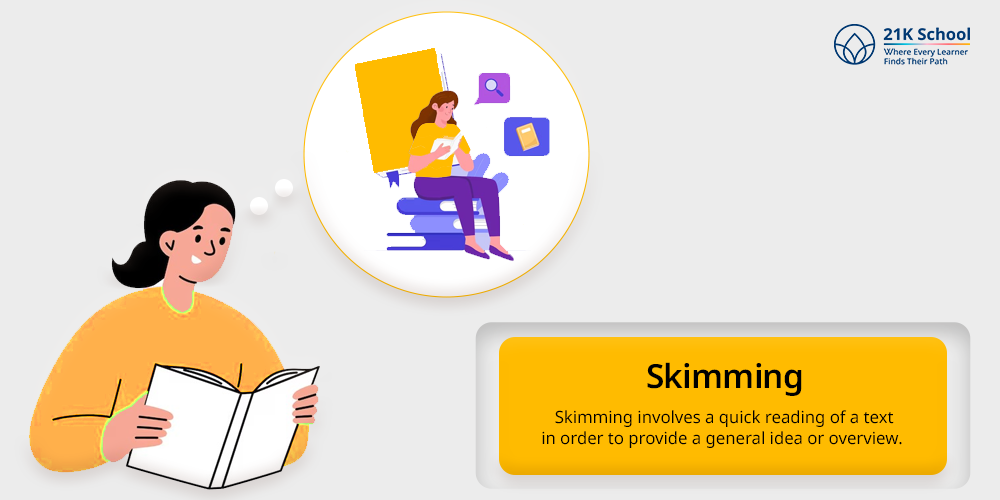
Skimming involves a quick reading of a text in order to provide a general idea or overview. It is effective in glancing over a chapter, making it relevant or running through what an article is about.
Skimming is reading of headings, subheadings, introductions and summaries.
3. Intensive Reading
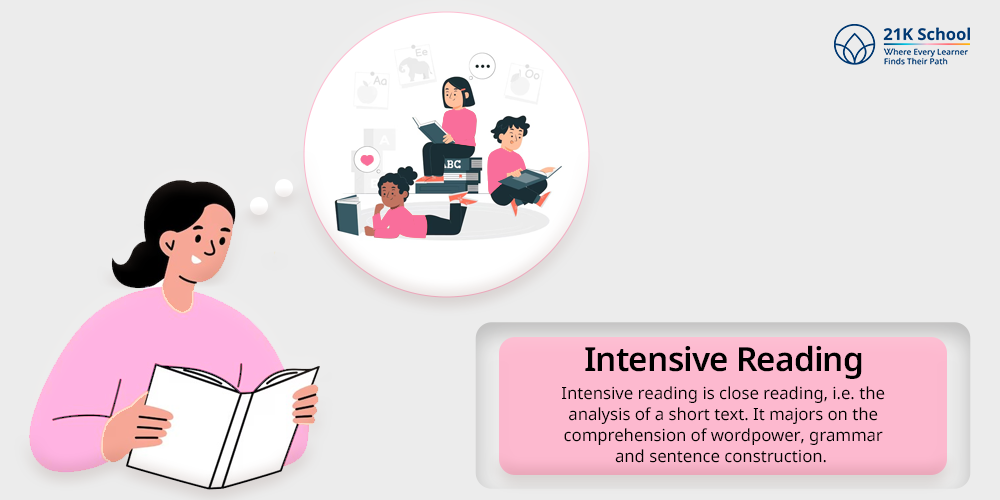
Intensive reading is close reading, i.e. the analysis of a short text. It majors on the comprehension of wordpower, grammar and sentence construction.
This kind of reading is common in academic institutes where people study books in better detail or practice new language features.
4. Extensive Reading
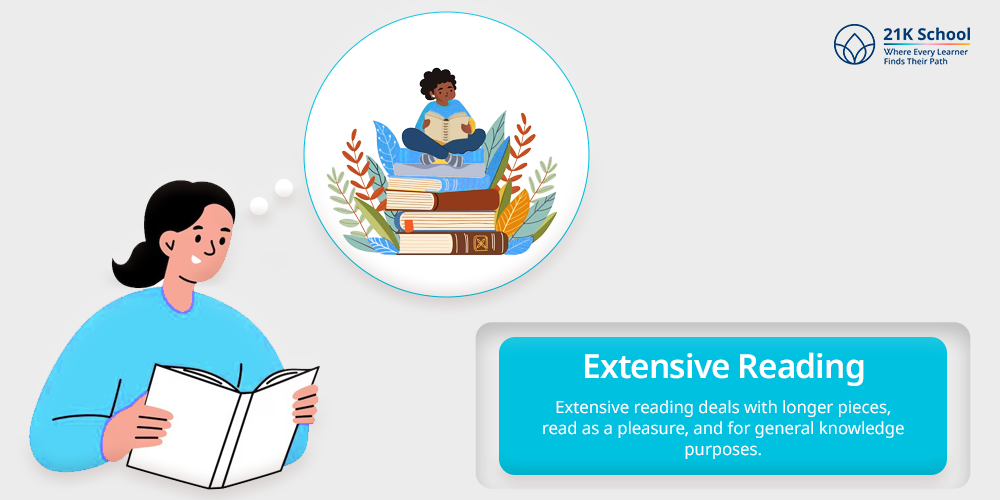
Extensive reading deals with longer pieces, read as a pleasure, and for general knowledge purposes. It has novels, magazines and other materials which are studied in detail.
The aim will be to develop fluency and extended knowledge of language.
5. Critical Reading
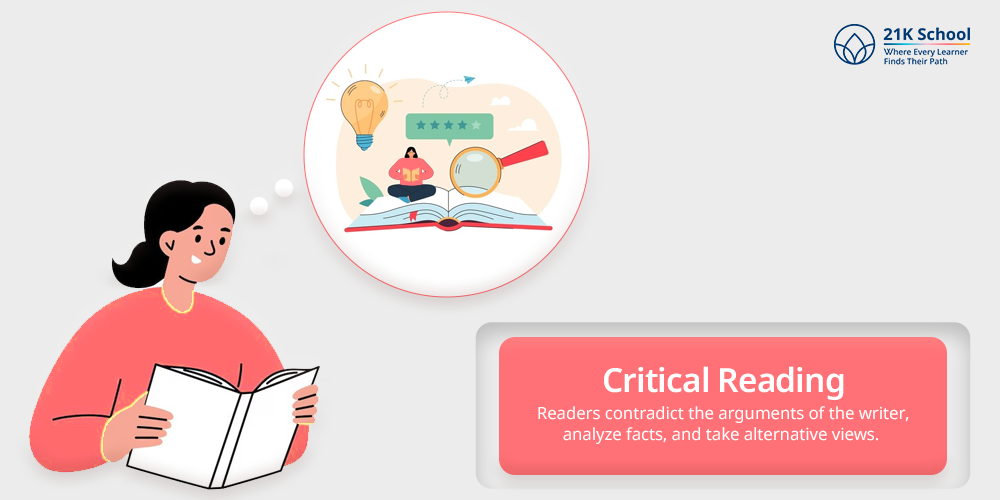
Critical reading is more than comprehension and involves the evaluation of the text. Readers contradict the arguments of the writer, analyze facts, and take alternative views.
This is very essential in academic achievement, and joining the ranks of informed consumers of information.
Ways to Improve Skills in Reading
Development of effective reading skills requires some time, practice and effective strategies. These are some of the ways on how you can improve your reading skills:
- Read a lot: reading various genres and different writing styles develop reading fluency and comprehension.
- Expand Vocabulary: Help to follow and learn new words using flashcards, applications, or reading logs.
- Learn to Skim and Scan: Learn how to locate major points, particularly in an academic study or course-related material learning.
- Ask Questions During Reading: This ensures that you are alert and you are able to think about what you are reading.
- Summarize What You Read: It is important to write or talk aloud about what is read to strengthen comprehension.
- Reading Groups: Reading with others can make your interpretation more comprehensive because you get to hear what other people think.
- Use Annotation: You can utilize the use of highlighted keylines and underlining of vocabulary and publicizing of notes into the margin to increase your engagement with the text.
- Take Breaks to Reflect: Take breaks to manage information, particularly following a study of a complicated material.
Concluding Thoughts
Reading is actually an active multi-faceted process that involves several levels of skills- decoding, phonics, comprehension and critical thinking. All of the skills enhance the process of decoding and reacting to the written information by the reader.
Developing a variety of reading types and polishing the main skills, people will become more confident and efficient in reading.
Reading is one of the most worthy investments you could ever make. Regardless of whether you are a student, an up-to-date professional, or a lifelong learner who reads for pleasure. Anyone can enhance his or her skills in reading and perceiving texts in their meanings with regular work and effective methods.


